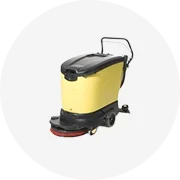Populair in uw branche






Tandpasta Oem Fabriek Schone Natuurlijke Ingrediënten, Uitgebalanceerd Schuim, Lage Slijtage, Duurzame Verse Plant Whitening Tandpasta Custom
€ 0,2411 - € 0,2781
Min. bestelling: 10000 dozen
Verzending per stuk: € 1,32







Groothandel Tandheelkundige Whitening Gele Vlek Verwijderen Helderwitte Glimlach Professionele Thuis Koud Licht Tanden Whitening Kit

€ 1,69 - € 3,34
Min. bestelling: 10 stukken
Verzending per stuk: € 1,91







Volwassen/Kind/Huisdier Tandpasta Custom Prive Logo Eigen Merk Natuurlijke Organische Whitening Tandpasta Oem
€ 0,2318 - € 0,2781
Min. bestelling: 10000 stukken
Verzending per stuk: € 1,06







Private Label Fabriek Prijs Mondverzorging Eco-Vriendelijke Fluoride Gratis Voor Thuis Whitening Kauwbare Vaste Tandpasta Tablet

€ 0,7416 - € 0,8343
Min. bestelling: 100 dozen
Verzending per stuk: € 6,70







Hoge Kwaliteit Tandpasta Natuurlijke Bright White Groothandel Tanden Whitening Mousse Tanden Schuim Tandpasta
Klaar voor verzending
€ 1,02 - € 1,21
Min. bestelling: 10 eenheden
Verzending per stuk: € 27,30












DR. RASHEL Gouden Heldere Wit Mint formule Verwijder Stain Reiniging Tandpasta
€ 0,7324 - € 1,11
Min. bestelling: 12 stukken






Fris En Helder Witte Tandpasta Bakken Soda Xylitol Tandpasta Volwassen En Kind Tandpasta
Klaar voor verzending
€ 0,2689 - € 0,4172
Min. bestelling: 1000 stukken
Verzending per stuk: € 0,8621






Close-Up Diepe Actie Roodgloeiende Tandpasta 60X100G Vlekpreventie, Schone Muntsmaak, Helderwitte Tanden
€ 0,547
Min. bestelling: 1000 dozen






Kruiden Tandpasta Gearomatiseerde Dental Baby Heldere Witte Tandpasta
€ 0,3894 - € 0,4079
Min. bestelling: 30000 stukken






Bamboe Houtskool Diepe Schoonheid Tandpasta Schoon Tandvlekken Mond Geur Helder Witte Tandverzorging Tandpasta
€ 0,686 - € 0,8621
Min. bestelling: 100 sets
Topcategorieën
Over witte heldere tandpasta
Kopen. witte heldere tandpasta voor afdrukken in kleur of zwart-wit met hoge resoluties van Alibaba.com. Of u nu een digitale foto wilt omzetten in een hardcopy, of voor uw fotografiehobby ,. witte heldere tandpasta maak het gemakkelijk om uw digitale foto's op papier af te drukken. U hoeft de platen niet te vervangen om opnieuw te printen, u hoeft alleen maar het commando af te vuren en u bij de hand te hebben. witte heldere tandpasta doet het werk.
witte heldere tandpasta heeft snel en schoon afdrukken mogelijk gemaakt voor verschillende toepassingen. Gebruik jouw. witte heldere tandpasta voor een van de verschillende doeleinden, persoonlijk of commercieel. Desktop publishing, variabel, print-on-demand, beeldende kunst, reclame, foto's, architectonisch ontwerp en strakke lijnen zijn gebieden die hebben geprofiteerd. witte heldere tandpasta. Bij Alibaba.com kunt u kant-en-klare digitale printers kiezen uit een van de verschillende beschikbare merken. Of zet digitale printers voor commercieel gebruik. Verfraai gewoon papier met rijke kleuren van uw LazerJet om verbluffende portretten tot leven te brengen.
Krijg de beste prijzen en vergelijk merken om het perfecte te vinden. witte heldere tandpasta voor uw behoefte. Beperk uw keuze van. witte heldere tandpasta door te filteren op basis van ingestelde parameters. Betaal gemakkelijk en ontvang. witte heldere tandpasta afgeleverd op een locatie naar keuze. Profiteer van fantastische aanbiedingen voor deze items op Alibaba.com.
Een scala aan. U kunt uit witte heldere tandpasta kiezen op Alibaba.com. witte heldere tandpasta leveranciers of groothandels kunnen hun klantenkeuze verruimen en hen printers aanbieden voor elke prijsklasse en van concurrerende merken. Vergelijk, kies en koop eenvoudig bij een vertrouwd merk. Druk high-definition af om elke herinnering te koesteren.
witte heldere tandpasta heeft snel en schoon afdrukken mogelijk gemaakt voor verschillende toepassingen. Gebruik jouw. witte heldere tandpasta voor een van de verschillende doeleinden, persoonlijk of commercieel. Desktop publishing, variabel, print-on-demand, beeldende kunst, reclame, foto's, architectonisch ontwerp en strakke lijnen zijn gebieden die hebben geprofiteerd. witte heldere tandpasta. Bij Alibaba.com kunt u kant-en-klare digitale printers kiezen uit een van de verschillende beschikbare merken. Of zet digitale printers voor commercieel gebruik. Verfraai gewoon papier met rijke kleuren van uw LazerJet om verbluffende portretten tot leven te brengen.
Krijg de beste prijzen en vergelijk merken om het perfecte te vinden. witte heldere tandpasta voor uw behoefte. Beperk uw keuze van. witte heldere tandpasta door te filteren op basis van ingestelde parameters. Betaal gemakkelijk en ontvang. witte heldere tandpasta afgeleverd op een locatie naar keuze. Profiteer van fantastische aanbiedingen voor deze items op Alibaba.com.
Een scala aan. U kunt uit witte heldere tandpasta kiezen op Alibaba.com. witte heldere tandpasta leveranciers of groothandels kunnen hun klantenkeuze verruimen en hen printers aanbieden voor elke prijsklasse en van concurrerende merken. Vergelijk, kies en koop eenvoudig bij een vertrouwd merk. Druk high-definition af om elke herinnering te koesteren.




























